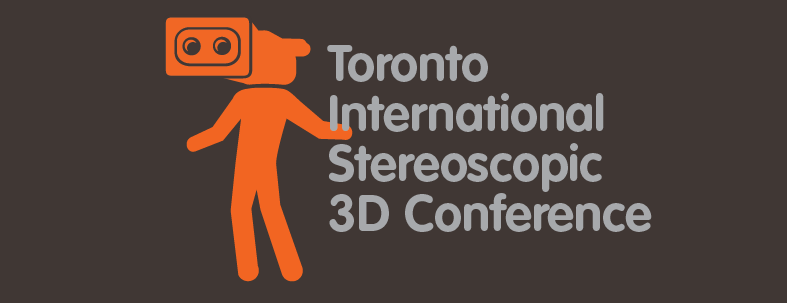Report by Alan Goldman
The Toronto 3D Stereoscopic Conference June 11-14, 2011 was the first of its kind in North America. The four-day celebration of everything 3D featured 65 presenters from various parts of the globe. It was truly an eclectic confluence of academia, industry, independent filmmakers and artists.
Wim Wenders Keynote
The keynote was given by German filmmaker Wim Wenders who described the process of making a documentary about his friend the late choreographer Pina Bausch. Wenders’ claimed that his 3D journey started after seeing the concert film U2 3D (2007) and stated that 3D will, “revitalize the format for documentary filmmakers”. He explained that he delayed the making of the film for twenty years until he discovered a medium that could properly portray her work. He also said that his decision to film in 3D was predicated on a desire to accentuate depth cues that would not have adequately been articulated in two dimensions. Wenders alleges that the 3D production process differs from the ones utilized in the making of 2D films, “You have to forget everything you know about filmmaking—because you have to organize the shots and the whole process in a very different way”. The dramatic clips that Wenders screened left the audience speechless, and wanting to the see the film in its entirety. The 3D truly seemed to emphasize the volume, space and depth of Bausch’s magnificent dances.
S3D team presents on 3D Hybrid forms
On the Emily Carr panel entitled 3D Hybrids, Emily Carr President Ron Burnett spoke about 3D’s presence. Dr. Maria Lantin showed her magnificent Ocean Breath and talked about 3D as a metaphor for the embodied self. Michael Verity presented his highly evocative medium format 3D slides (taken recently on Fogo Island, Newfoundland), and I (Alan Goldman) discussed my research Documentary in Z space.
Conference Highlights
Throughout the event there were many other presentations about 3D and its present and future form. The following are few highlights:
- Phillipe Mora, who has made more than 28 feature films and documentaries, claims to have found 3D movies made by the Nazis. Mora described his findings about a group of scientists who apparently captured track events at the 1936 Olympic games in 3D. These scientists could process and project the film less than 15 minutes after the events were completed. Mora believes that there is evidence to suggest that Jessie Owens’s famous 100 yard dash may have been filmed in 3D.
- Catherine Owens gave a Master class about her role as the director of U2 3D. She spoke of how the film came into being, and about her collaboration with cinematographer Peter Anderson. Owens drew from contemporary art practices and challenged the assumption of what we see, introducing creators to the nuances of directing 3D.
- Graeme Ferguson spoke after a screening of Hubble 3D at the Imax theatre about his experiences producing Imax 3D and of how the format has evolved in the years since he and his colleagues imagined it at Expo 67. Ferguson also referred to the influence that Norman McLaren’s early 3D filmAround is Around had on his practice.
The conference was unique and stimulating, leading to many discussions about 3D’s past and present. There were many intersecting points of topical interest between the participants. Consensus was reached on many subjects, including the need for a new language for 3D that incorporates art praxis.

